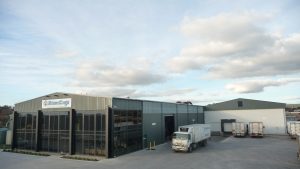By mid-2013 NT Recycling Solutions (ntrs) had enjoyed rapid growth from a single truck, driven by the owner Leon Schulz, to a fleet of twenty trucks. The company wanted a system that would provide it with a platform to continue its growth without a significant increase in administration costs. ntrs chose Fenwick Software with the enwis waste management system, integrated with Microsoft Dynamics NAV and Easy Dispatch.

enwis, Dynamics NAV and Easy Dispatch allow rapid growth
ntrs was established on 2005 when Leon Shilz moved to Darwin from Adelaide, purchased a truck, and started the company. Since then, ntrs has grown rapidly to become the leading recycling service provider in the Northern Territory. Its waste management facilities and treatment technologies ensure that ntrs provides innovative and sustainable recycling solutions for all types of waste including: commercial; household; industrial; construction; liquid (including septic and oil); and hazardous waste. ntrs also provides security destruction and asset rental services (skips,bins, tanks, etc.).
ntrs now employs fifty-plus people, has a fleet of twenty-five trucks and provides services from three locations in Darwin, servicing over one-thousand customers.
The Requirements
ntrs wanted to replace its existing systems of MYOB, Waste Edge and RAMS with an integrated ERP system that included all of the following modules: Financials; Waste Management Contracts and Operations; Payroll; Fixed Assets; a Drag & Drop Dispatch Board; In-truck communications; Rentals; and in a later phase, Asset Maintenance.
We had a specific objective to implement a system that would allow the company to continue its growth without incurring a significant increase in administration costs. Fenwick’s rapid implementation of NAV with enwis, plus Easy Dispatch ,achieved that objective.
Leon Shulz, Owner, ntrs
The Challenge
ntrs required a rapid implementation with very tight control of costs. The company also wanted to reduce its administration costs and had a long term aim of achieving a paperless operation. An additional challenge came from the data conversion required for one thousand customers with complex pricing.
The Approach
In order to implement the system as quickly as possible, the core components of the system were scheduled in two phases: Microsoft Dynamics NAV was implemented first, followed by enwis operations and Easy Dispatch (for the truck scheduling). It was decided to implement Asset Maintenance at a later date once the operational systems were bedded down.
Fenwick quickly came to understand our business. They proposed and developed innovative solutions that delivered real business benefits.
Dean Caton, GM, ntrs
A Platform for Growth
The Microsoft Dynamics NAV Financials suite was implemented and went live in two months. The approach adopted was to have as few modifications as possible. This reduced both cost and the time taken to implement the system. Two months after the NAV Financials implementation, the enwis waste management system and the Easy Dispatch fleet scheduling system went live.
Using Leading Edge Technology to Achieve Differentiation, Truck Fleet Productivity and Exceptional Customer Service
Fenwick’s Easy Dispatch vehicle scheduling system was modified slightly to meet the specific needs of ntrs. The system provided ntrs with a dual screen, visual display dispatch board. The system displays orders and allows real-time scheduling of trucks. It provides a visual ‘report’ of work progress during the day.
Fenwick Software wrote a special web application for iPads to be installed in the ntrs trucks. After some early problems in testing caused by patchy mobile coverage, the system was modified to use sophisticated synchronisation to overcome poor mobile coverage situations. “The Dispatch Board and iPads eliminated manual processes. This was fundamental to the admin cost savings we achieved,” Dean Caton, ntrs GM, said.
Benefits for the Business
The system went live in November 2013. Since then the company has grown its fleet from twenty to twenty-five trucks. The company has increased the number of services it offers while reducing labour and administration costs. It has halved the manual work involved in truck job allocation, run preparation and run checking.





